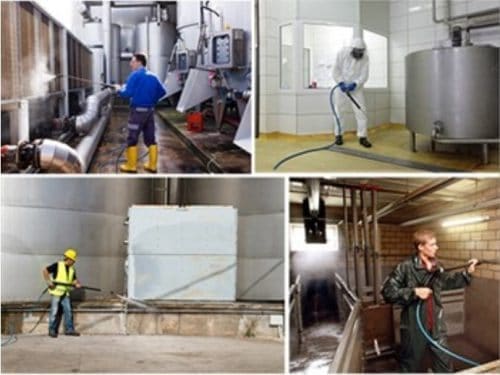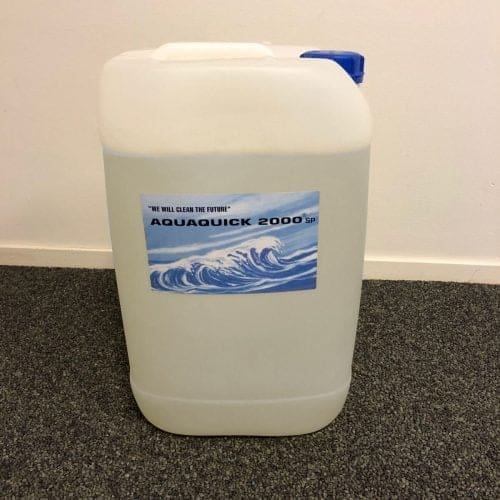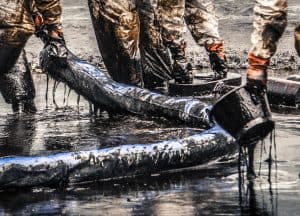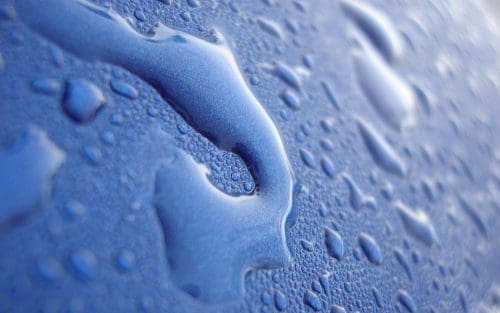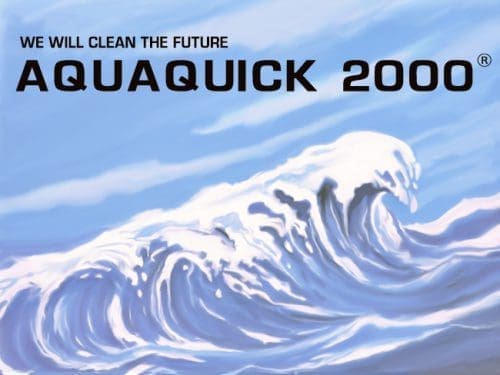Die Wartung von Schiffskraftstofftanks ist für den effizienten Betrieb eines jeden Schiffes entscheidend, ganz gleich, ob es sich um ein kleines Freizeitboot oder ein großes Handelsschiff handelt. Mit der Zeit können sich in Schiffskraftstofftanks Verunreinigungen wie Schlamm, Wasser und mikrobielles Wachstum ansammeln, die die Kraftstoffqualität und die Motorleistung beeinträchtigen können. Die regelmäßige Reinigung von Schiffskraftstofftanks gewährleistet nicht nur die Langlebigkeit des Schiffsmotors, sondern trägt auch zu einem sichereren und effizienteren Betrieb auf See bei. In diesem umfassenden Leitfaden gehen wir auf die Bedeutung der Reinigung von Schiffskraftstofftanks, die angewandten Methoden, bewährte Verfahren und Sicherheitsaspekte ein.
Bedeutung der Reinigung von Schiffskraftstofftanks
Schiffskraftstofftanks sind, wie jedes andere Kraftstofflagersystem, anfällig für Verunreinigungen. Mit der Zeit können sich verschiedene Verunreinigungen am Boden des Tanks absetzen. Tankwas zu einer Ansammlung von Schlamm und anderen Ablagerungen führt. Wasser kann auch durch Kondenswasser oder Lecks in Schiffskraftstofftanks eindringen und eine Umgebung schaffen, die das Wachstum von Mikroorganismen, insbesondere Bakterien und Pilzen, begünstigt. Diese Mikroorganismen können auf den Innenflächen des Tanks einen Biofilm bilden, der zu einer weiteren Verunreinigung des Kraftstoffs führt.
Die Folgen einer vernachlässigten Reinigung von Schiffskraftstofftanks sind erheblich. Verunreinigter Kraftstoff kann Filter verstopfen, Einspritzdüsen beschädigen und die Motorleistung verringern. In schwerwiegenden Fällen kann es zu Motorausfällen kommen, die katastrophale Folgen haben können, vor allem, wenn ein Schiff weit von der Küste entfernt ist. Darüber hinaus kann verunreinigter Kraftstoff die Effizienz der Verbrennung verringern, was zu erhöhten Emissionen führt, was angesichts der weltweiten Bemühungen um umweltfreundlichere Schifffahrtspraktiken immer wichtiger wird.
Wann müssen Kraftstofftanks gereinigt werden?
Die Bestimmung des geeigneten Intervalls für die Reinigung von Schiffskraftstofftanks hängt von mehreren Faktoren ab, darunter die Art des verwendeten Kraftstoffs, das Alter des Tanks und die Betriebsbedingungen. Es können jedoch einige allgemeine Richtlinien befolgt werden:
- Regelmäßige Wartungsintervalle: Im Allgemeinen wird empfohlen, Schiffskraftstofftanks mindestens einmal alle 1-2 Jahre zu reinigen. Bei Schiffen, die unter schwierigen Bedingungen arbeiten oder minderwertigen Kraftstoff verwenden, kann eine häufigere Reinigung erforderlich sein.
- Anzeichen von Kontamination: Bei Anzeichen von Kraftstoffverschmutzung, wie z. B. verstopften Filtern, Motorleistungsproblemen oder Wasser im Kraftstoff, ist eine sofortige Reinigung ratsam.
- Nach dem Kraftstoffwechsel: Bei der Umstellung von einer Kraftstoffsorte auf eine andere kann die Reinigung von Schiffskraftstofftanks eine Kreuzkontamination verhindern und sicherstellen, dass der neue Kraftstoff optimal funktioniert.
- Vor langen Fahrten: Bei Schiffen, die längere Fahrten planen, insbesondere in abgelegenen Gebieten, ist es ratsam, die Kraftstofftanks zu reinigen, um das Risiko von Motorproblemen während der Fahrt zu minimieren.
Methoden zur Reinigung von Schiffskraftstofftanks
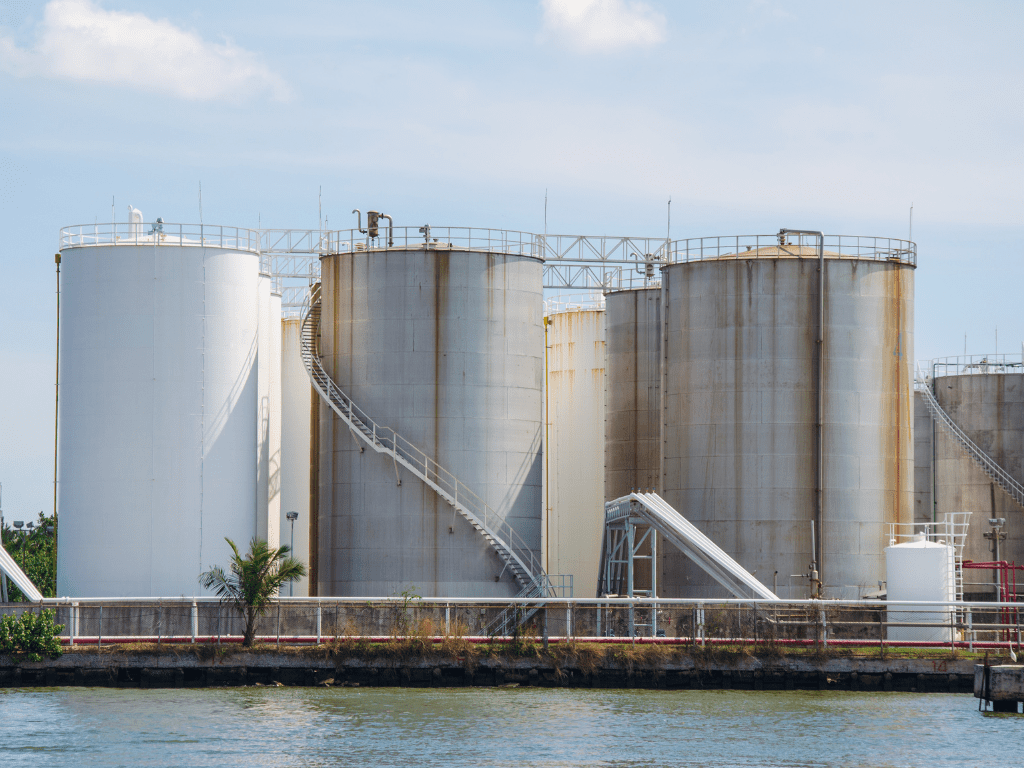
Die Reinigung von Schiffskraftstofftanks kann ein komplexer und arbeitsintensiver Prozess sein, der spezielle Ausrüstung und Fachwissen erfordert. Es gibt mehrere Methoden, die jeweils für unterschiedliche Verschmutzungsgrade und Tankkonfigurationen geeignet sind.
1. Manuelle Reinigung
Die manuelle Reinigung ist eine der gründlichsten Methoden zur Reinigung von Schiffskraftstofftanks. Bei diesem Verfahren wird der Tank entleert, physisch betreten und Schlamm, Ablagerungen und andere Verunreinigungen manuell entfernt. Zu den Schritten der manuellen Reinigung gehören:
- Tankentwässerung: Der Kraftstoff wird aus dem Tank abgelassen, und die verbleibende Flüssigkeit wird mit Pumpen entfernt.
- Belüftung: Der Tank wird belüftet, um schädliche Dämpfe zu entfernen und eine sichere Arbeitsumgebung für das Personal zu gewährleisten.
- Eintrag: Geschultes Personal betritt den Tank mit geeigneter Schutzausrüstung, einschließlich Atemschutzmasken, Schutzkleidung und Klettergurten.
- Abkratzen und Abwischen: Die Innenflächen des Tanks werden abgeschabt und abgewischt, um alle Spuren von Schlamm, Biofilm und anderen Verunreinigungen zu entfernen.
- Inspektion: Nach der Reinigung wird der Tank auf Anzeichen von Korrosion, Beschädigungen oder andere Probleme untersucht, die vor der Wiederbefüllung des Tanks behoben werden müssen.
Die manuelle Reinigung ist zwar sehr wirksam, aber auch die teuerste und zeitaufwändigste Methode. Sie ist in der Regel stark verschmutzten Tanks vorbehalten oder wenn andere Methoden unzureichend sind.
2. Chemische Reinigung
Chemische Reinigung beinhaltet den Einsatz spezieller Chemikalien, um Verunreinigungen in Schiffskraftstofftanks abzubauen und zu entfernen. Diese Methode ist weniger arbeitsintensiv als die manuelle Reinigung und eignet sich besonders gut zur Entfernung von mikrobiellem Wachstum und Schlamm. Das Verfahren umfasst im Allgemeinen:
- Chemische Anwendung: Eine Reinigungslösung wird in den Tank eingebracht, entweder durch direkte Anwendung oder durch Mischung mit dem Kraftstoff.
- Zirkulation: Die chemische Lösung wird mit Hilfe von Pumpen im Tank umgewälzt, so dass alle Innenflächen mit dem Reiniger in Kontakt kommen.
- Verweilzeit: Die Lösung wird für einen bestimmten Zeitraum in den Tank gegeben, wo sie Schlamm, Biofilm und andere Verunreinigungen abbaut.
- Spülung: Der Tank wird dann mit sauberem Wasser oder Kraftstoff gespült, um die chemische Lösung und alle gelösten Verunreinigungen zu entfernen.
- Inspektion und Prüfung: Nach der Reinigung wird der Tank inspiziert, und es werden Proben entnommen, um sicherzustellen, dass keine Verunreinigungen zurückbleiben.
Die chemische Reinigung ist weniger invasiv als die manuelle Reinigung und kann ohne Betreten des Tanks durchgeführt werden. Sie erfordert jedoch einen sorgfältigen Umgang mit den eingesetzten Chemikalien und eine ordnungsgemäße Entsorgung der dabei anfallenden Abfallprodukte.
3. Kraftstoffpolieren

Die Kraftstoffaufbereitung ist eine Methode, die sich auf die Reinigung des Kraftstoffs selbst und nicht des Tanks konzentriert. Bei diesem Verfahren wird der Kraftstoff durch eine Reihe von Filtern zirkuliert, um Wasser, Schlamm und andere Verunreinigungen zu entfernen. Beim Kraftstoffpolieren werden zwar nicht die Innenflächen des Tanks gereinigt, aber es kann wirksam dazu beitragen, die Kraftstoffqualität zu erhalten und die Ansammlung von Verunreinigungen im Tank zu verhindern. Das Verfahren umfasst in der Regel folgende Schritte:
- Filtrierung: Der Kraftstoff wird aus dem Tank gepumpt und durch eine Reihe von Filtern geleitet, die Wasser, Schlamm und Partikel entfernen.
- Umwälzung: Der gereinigte Kraftstoff wird dann in den Tank zurückgeführt, oft nach mehreren Durchläufen durch das Filtersystem.
- Inspektion: Der Tank wird auf eventuelle Restverschmutzungen untersucht, und gegebenenfalls werden zusätzliche Polierzyklen durchgeführt.
Das Polieren von Kraftstoffen ist als vorbeugende Wartungsmaßnahme besonders nützlich, vor allem bei Schiffen, bei denen keine nennenswerten Probleme mit Kraftstoffverunreinigungen auftreten. Bei stark verunreinigten Tanks reicht sie jedoch möglicherweise nicht aus. In diesem Fall können intensivere Reinigungsmethoden erforderlich sein.
Bewährte Praktiken für die Reinigung von Schiffskraftstofftanks
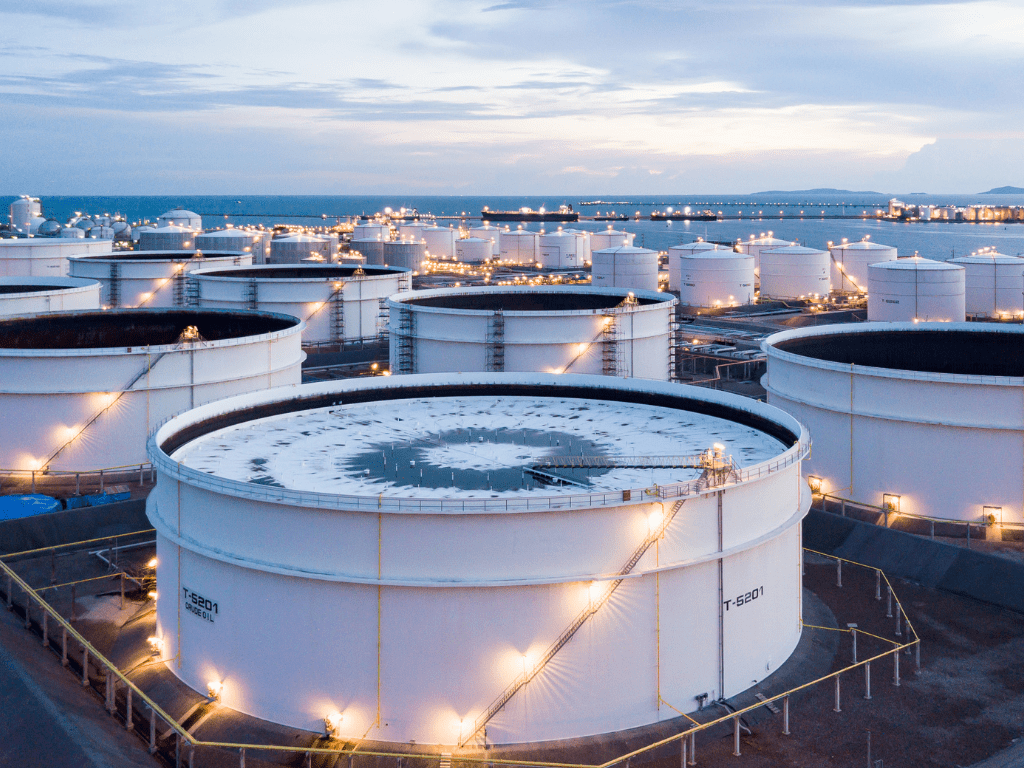
Um die Wirksamkeit der Reinigung von Schiffskraftstofftanks zu gewährleisten, ist es wichtig, bestimmte Best Practices zu befolgen. Diese Richtlinien tragen dazu bei, die Effizienz des Reinigungsprozesses zu maximieren und die mit dem Umgang mit Kraftstoff und Chemikalien verbundenen Risiken zu minimieren.
1. Professionelle Dienstleistungen nutzen
Angesichts der Komplexität und der potenziellen Gefahren, die mit der Reinigung von Schiffskraftstofftanks verbunden sind, ist es oft ratsam, professionelle Dienste zu beauftragen. Erfahrene Auftragnehmer verfügen über die notwendige Ausrüstung, das Fachwissen und die Sicherheitsprotokolle, um die Reinigung effektiv und sicher durchzuführen.
2. Regelmäßige Überwachung und Prüfung
Eine regelmäßige Überwachung der Kraftstoffqualität und des Tankzustands kann dazu beitragen, Verunreinigungsprobleme zu erkennen, bevor sie sich zu einem ernsten Problem auswachsen. Dazu können routinemäßige Probenahmen des Kraftstoffs auf Wassergehalt, mikrobielle Verunreinigung und Partikel gehören. Eine frühzeitige Erkennung ermöglicht eine rechtzeitige Reinigung und kann ernstere Probleme im weiteren Verlauf verhindern.
3. Einhaltung von Sicherheitsprotokollen
Bei der Reinigung von Schiffskraftstofftanks sollte die Sicherheit oberste Priorität haben. Dazu gehören eine ordnungsgemäße Belüftung des Tanks, die Verwendung geeigneter persönlicher Schutzausrüstung (PSA) und die Einhaltung der Sicherheitsvorschriften für das Betreten enger Räume. Außerdem muss sichergestellt werden, dass alle elektrischen Geräte, die bei der Reinigung verwendet werden, explosionsgeschützt sind, da die Kraftstoffdämpfe eine Brandgefahr darstellen können.
4. Ordnungsgemäße Abfallentsorgung
Die bei der Reinigung von Schiffskraftstofftanks anfallenden Abfälle, einschließlich Schlamm, verunreinigtem Kraftstoff und chemischen Rückständen, müssen gemäß den Umweltvorschriften entsorgt werden. Eine unsachgemäße Entsorgung kann zu gesetzlichen Strafen und Umweltschäden führen. Professionelle Reinigungsdienste kümmern sich in der Regel um die Abfallentsorgung und stellen sicher, dass diese auf sichere und vorschriftsmäßige Weise erfolgt.
5. Dokumentation und Aufbewahrung von Aufzeichnungen
Detaillierte Aufzeichnungen über die Reinigung von Schiffskraftstofftanks sind wichtig, um Wartungspläne zu verfolgen und die Einhaltung von Vorschriften zu gewährleisten. Die Aufzeichnungen sollten das Datum der Reinigung, die verwendeten Methoden, alle festgestellten Probleme und die Ergebnisse der Nachreinigungsinspektionen enthalten. Diese Dokumentation kann auch bei der Diagnose künftiger Probleme und der Planung nachfolgender Reinigungsarbeiten hilfreich sein.
Sicherheitserwägungen bei der Reinigung von Schiffskraftstofftanks
Die Reinigung von Schiffskraftstofftanks ist nicht ohne Risiken, und Sicherheitsüberlegungen sind von größter Bedeutung, um Unfälle zu vermeiden und das Wohlergehen des an dem Prozess beteiligten Personals zu gewährleisten.
1. Betreten von engen Räumen
Schiffskraftstofftanks gelten als enge Räume, die aufgrund der eingeschränkten Belüftung, des eingeschränkten Ein- und Ausstiegs und des potenziellen Vorhandenseins von giftigen Dämpfen erhebliche Gefahren bergen. Vor dem Betreten eines Tanks müssen unbedingt eine Risikobewertung durchgeführt und die erforderlichen Genehmigungen eingeholt werden. Das Personal sollte in den Verfahren zum Betreten enger Räume geschult werden, und außerhalb des Tanks sollte stets eine Sicherheitswache stationiert sein.
2. Gefährliche Chemikalien
Chemische Reinigungsmittel, die bei der Reinigung von Schiffskraftstofftanks verwendet werden, können sowohl für Menschen als auch für die Umwelt gefährlich sein. Die ordnungsgemäße Handhabung, Lagerung und Entsorgung dieser Chemikalien ist entscheidend. Das Personal sollte geeignete PSA tragen, darunter Handschuhe, Schutzbrillen und Atemschutzmasken, um sich vor einer Exposition zu schützen. Außerdem ist es wichtig, die Anweisungen des Herstellers für die Verwendung und Verdünnung von chemischen Reinigungsmitteln zu befolgen.
3. Brand- und Explosionsgefahren
Das Vorhandensein von Kraftstoffdämpfen in Schiffskraftstofftanks birgt die Gefahr eines Brandes oder einer Explosion während des Reinigungsvorgangs. Um dieses Risiko zu mindern, sollten alle im Tank verwendeten elektrischen Geräte, einschließlich Beleuchtung, Pumpen und Belüftungsventilatoren, eigensicher oder explosionsgeschützt sein. Darüber hinaus sollten Rauchen, offene Flammen und andere Zündquellen in der Nähe des Tanks strengstens verboten sein.
4. Schutz der Umwelt
Bei der Reinigung von Schiffskraftstofftanks können gefährliche Abfälle, einschließlich verunreinigter Kraftstoffe und Schlämme, anfallen, die gemäß den Umweltvorschriften entsorgt werden müssen. Auch Verschüttungen und Leckagen während des Reinigungsprozesses können eine Gefahr für die Umwelt darstellen, insbesondere wenn sie in der Nähe von Gewässern auftreten. Es ist wichtig, dass Maßnahmen zur Eindämmung von Leckagen getroffen werden und dass mit allen Abfallstoffen verantwortungsvoll umgegangen wird.
Entscheiden Sie sich für AQUAQUICK 2000-Save Marine Life
AQUAQUICK 2000 ist aufgrund seiner leistungsstarken, umweltfreundlichen Formulierung eine ideale Lösung für die Reinigung von Schiffskraftstofftanks. AQUAQUICK 2000 wurde speziell entwickelt, um die Herausforderungen der Kraftstoffverschmutzung zu bewältigen. Schlamm, Biofilme und andere schädliche Rückstände, die sich im Laufe der Zeit in Schiffskraftstofftanks ansammeln, werden effektiv abgebaut und dispergiert. Im Gegensatz zu herkömmlichen chemischen Reinigern, die eine Gefahr für die Umwelt darstellen oder schädliche Rückstände hinterlassen können, ist AQUAQUICK 2000 biologisch abbaubar und ungiftig, so dass die Reinigung ohne Beeinträchtigung des umgebenden marinen Ökosystems erfolgt.
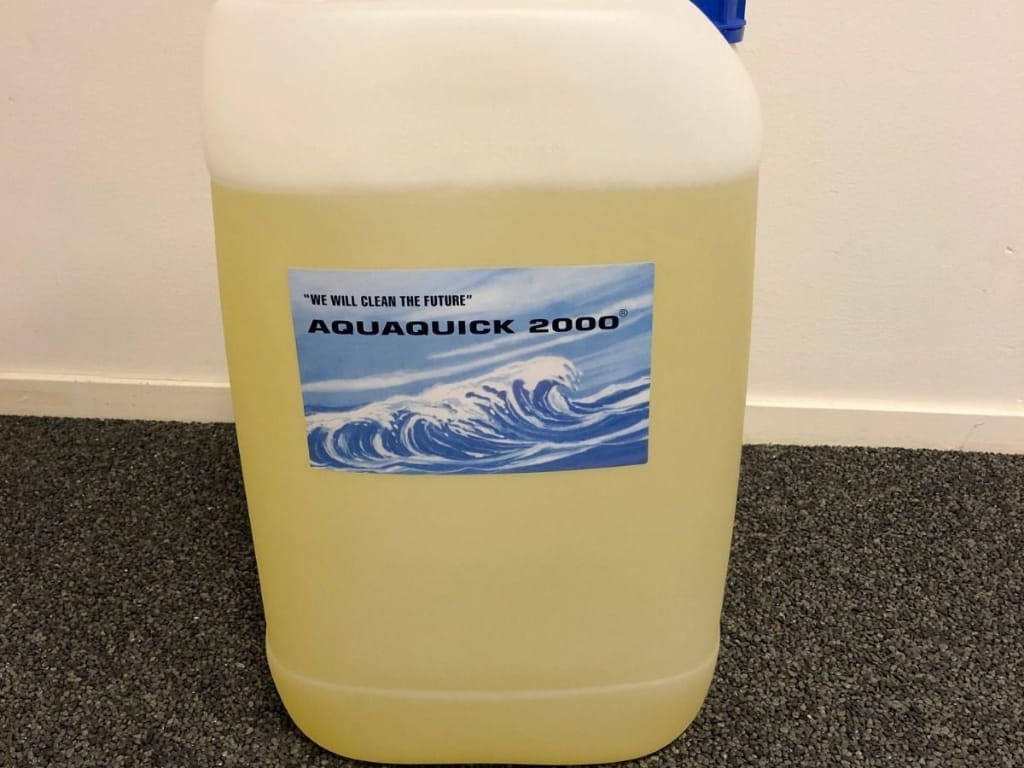
Eines der herausragenden Merkmale des AQUAQUICK 2000 ist seine Vielseitigkeit. Er kann für verschiedene Reinigungsmethoden eingesetzt werden, einschließlich manueller Reinigung, chemischer Umwälzung und Kraftstoffpolitur. Diese Flexibilität ermöglicht es den Betreibern, ihre Vorgehensweise an den Grad der Verschmutzung und die spezifischen Anforderungen ihrer Schiffe anzupassen. Darüber hinaus ist AQUAQUICK 2000 äußerst effektiv bei der Entfernung von Wasser, einem häufigen Problem in Schiffstanks, das zu mikrobiellem Wachstum und Kraftstoffverschlechterung führen kann.
Die Benutzerfreundlichkeit und das Sicherheitsprofil von AQUAQUICK 2000 machen es auch zur bevorzugten Wahl für die Reinigung von Schiffstanks. Es reduziert den Bedarf an scharfen Chemikalien und umfangreicher Arbeit und macht den Reinigungsprozess effizienter und weniger gefährlich für das Personal. Mit der Wahl von AQUAQUICK 2000 sorgen Schiffsbetreiber nicht nur für ein sauberes, zuverlässigeres Kraftstoffsystem, sondern tragen auch zur ökologischen Nachhaltigkeit bei und entsprechen damit der wachsenden Bedeutung umweltfreundlicher Praktiken in der maritimen Industrie.
Was zeichnet AQUAQUICK 2000 aus?
Die fortschrittliche Formulierung von AQUAQUICK 2000 erhöht auch die Langlebigkeit von Schiffskraftstofftanks und zugehörigen Komponenten. Durch die effektive Entfernung von Verunreinigungen und die Verhinderung der Bildung von Schlamm und Biofilmen wird das Risiko von Korrosion und mechanischen Ausfällen verringert. Dies sorgt nicht nur für eine gleichmäßigere Motorleistung, sondern verlängert auch die Wartungsintervalle für Komponenten des Kraftstoffsystems, was letztlich zu Kosteneinsparungen bei Wartung und Reparaturen führt.
Darüber hinaus ist AQUAQUICK 2000 benutzerfreundlich und erfordert nur minimale Schulung für eine effektive Anwendung, was den Reinigungsprozess noch weiter rationalisiert. Für Betreiber, die sowohl auf Effizienz als auch auf Umweltfreundlichkeit Wert legen, AQUAQUICK 2000 ist die perfekte Wahl für die Instandhaltung sauberer und funktionsfähiger Schiffskraftstofftanks.
Schlussfolgerung
Die Reinigung von Schiffskraftstofftanks ist eine wichtige Wartungsaufgabe, die den effizienten und sicheren Betrieb von Schiffen gewährleistet. Mit der Zeit können sich in Kraftstofftanks Verunreinigungen wie Schlamm, Wasser und mikrobielles Wachstum ansammeln, die die Kraftstoffqualität und die Motorleistung beeinträchtigen können. Durch den Einsatz geeigneter Reinigungsmethoden wie manuelle Reinigung, chemische Reinigung oder Kraftstoffpolitur können Schiffsbetreiber die Integrität ihrer Kraftstoffsysteme erhalten und kostspielige und potenziell gefährliche Probleme vermeiden.
Regelmäßige Kontrollen, die Einhaltung von Sicherheitsprotokollen und die Inanspruchnahme von professionellen Reinigungsdiensten sind der Schlüssel zu einer effektiven Reinigung von Schiffskraftstofftanks. Wenn Schiffsbetreiber bewährte Verfahren befolgen und auf Anzeichen von Verunreinigungen achten, können sie sicherstellen, dass ihre Kraftstofftanks sauber bleiben und ihre Motoren reibungslos laufen.
Zusammenfassend lässt sich sagen, dass die Bedeutung der Reinigung von Schiffskraftstofftanks nicht hoch genug eingeschätzt werden kann. Es ist eine Aufgabe, die sorgfältige Planung, die richtige Ausrüstung und ein Engagement für Sicherheit und Umweltschutz erfordert. Wenn Schiffsbetreiber ihre Treibstofftanks sauber halten, können sie kostspielige Reparaturen vermeiden, die Lebensdauer ihrer Motoren verlängern und zu einem sichereren und effizienteren Schiffsbetrieb beitragen.



